https://www.youtube.com/watch?v=LLb4mTC1_dI
How to Remove Popcorn Ceilings _ DIY HOME REMODEL
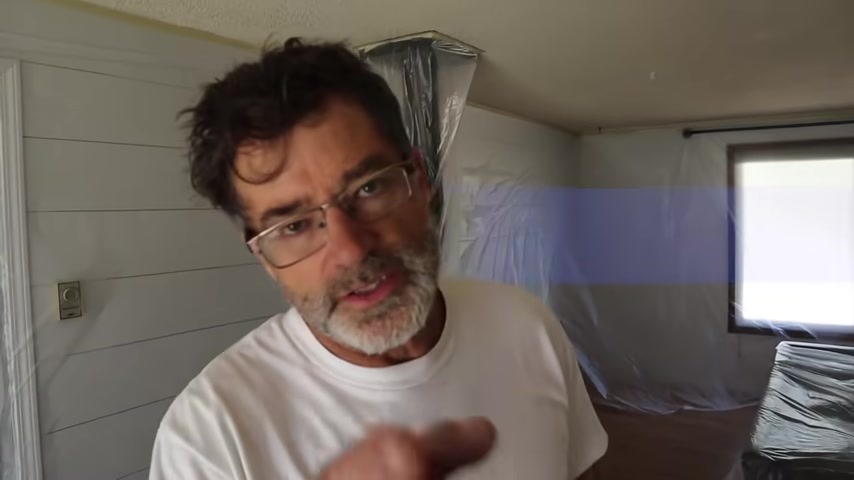
I do care .
I started in drywall in 1979 .
And part of that process of going through a 15 year more care of it was spraying a product , a texture called acoustic onto ceilings .
Back in the late seventies and early eighties , acoustic , otherwise known as popcorn , cottage cheese oatmeal .
And you can see it right here on the sea that was sprayed on basically in 1979 .
This has not been painted over the years after spraying it on .
For many years , years later , people wanted it taken off and a new texture put on because over time it gets dirty , you have to paint it , spiders build webs up there .
It's hard to clean because the stuff starts coming off earlier .
It was a product with mud , drywall mud .
Later , these things are a little star from pellets sprayed with dr of mud .
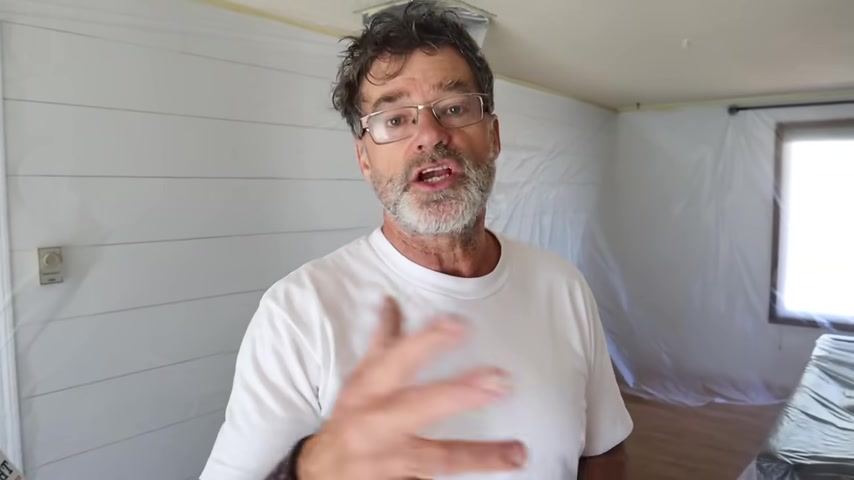
We used a big machine and sprayed it like crazy .
Well , once it came to the time when people didn't want it anymore , they called people to scrape it off homeowners if they didn't know any better , try to scrape it off dry .
It's a process .
It's dusty .
It takes forever .
They often use smaller knives .
And by the time they're done with even a small room , their shoulder is shot , they wore out .
Oftentimes people come and go , hey , come in and rescue me here .
I started this project and I know I'm doing it wrong .
Show me how to do it right .
The best way , the absolute best way to do it is do like we've done here this green , all the walls out with tape and painters plastic and this is nine by 400 ft .
It did this entire room .
It'll do several more bedrooms .
If you have higher ceilings , you have to get 12 ft plastic by the same length , usually 400 ft .
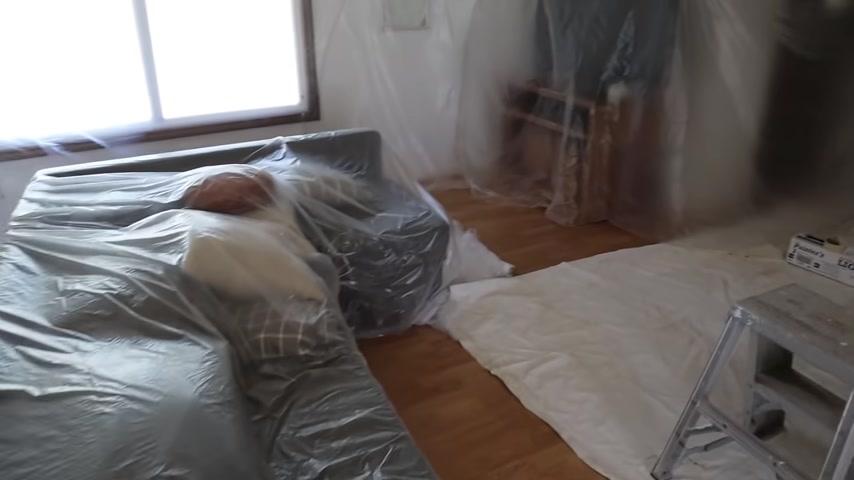
So once you've done that , you've gone and mass all round with masking tape and that painters plastic , you totally made a plastic tint that will protect your walls and other things you have on the wall , like the television set over there or framed pictures .
Then you're ready to do a very exciting thing .
When I first started doing it , I use a pump sprayer , a garden sprayer .
Made sure I cleaned all the round up out of it first and would spray , spray it down .
It took a while , but the moisture gets to it and as we'll see later , it makes the job much more easier .
Now I use it airless .
Finally .
Don .
To me , why don't I use it ?
Airless .
Have an airless sprayer and just run water through it and just darken it , wet it down and you can see the color difference over there .
I've already sprayed that and it turns gray .
Now , here's the thing you need to know .
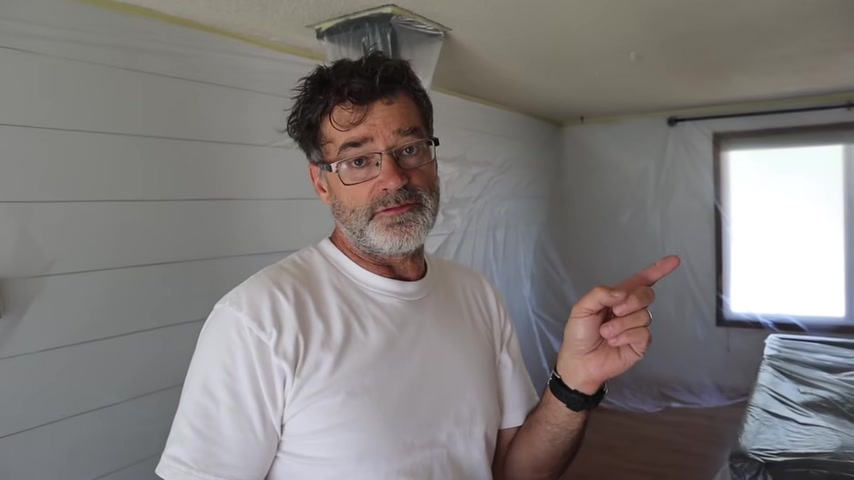
Also , sometimes over the years people painted it because they got sick of that dust that accumulated and it falling down , they painted it .
That's really hard to get off .
So , the best way again is to use moisture with an airless or a pump sprayer , get that saturated in there .
It starts impregnating the paint and after a while you'll be able to scrape it off .
Also , the trouble with scraping it off dry is people will try it and they'll end up gouging the drywall and then you have a bunch of drywall repairs .
It's best to get a bigger knife and then you can just take off huge sections .
Once it's wet , it'll virtually just peel off .
Another good part about doing it wet is it takes all the dust out and it's interesting acoustic comes from spraying this in large halls where it cut the reverb down and it kind of transfers over into a residential construction , but nobody really wants anymore .
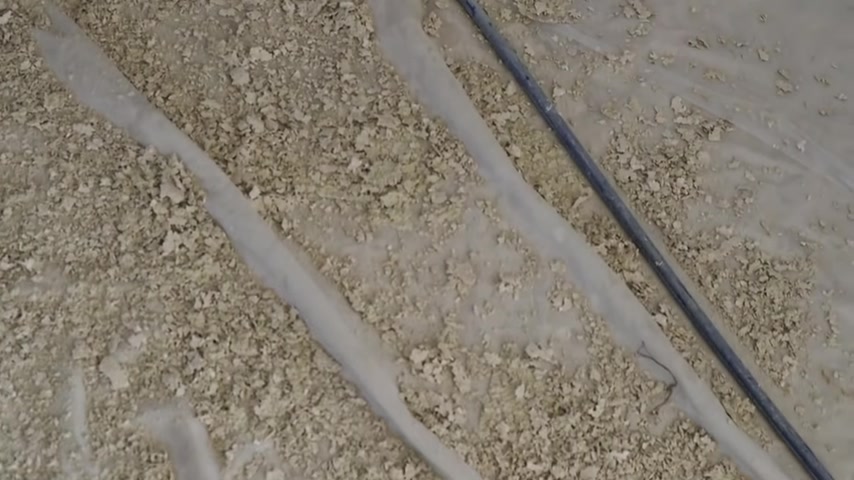
It's funny because we used to spray glitter , the mud would still be wet and we had this crank thing .
You can add a air thing to your , your air equipment too and it would shoot up these little silver stars or gold stars and people thought , oh , that's awesome .
But later on again , they got tired of it .
So we're gonna go through a process .
We've already vis queened all the walls off .
Use masking tape , use drop claws on the floor to catch a lot of that moisture .
But most of the moisture is going to go into the acoustic because I was in drywall .
Have a pair of stilts .
If you don't , you can get on a ladder .
Once it's wet enough , you'll find out and you'll just gently take your blade , keep it flat .
Not too much like that , it'll gouge a drawl and then just start scraping .
So we use our airless to really dampen this acoustic .
At this point , we can find out if it's ready to go .
If we do this .
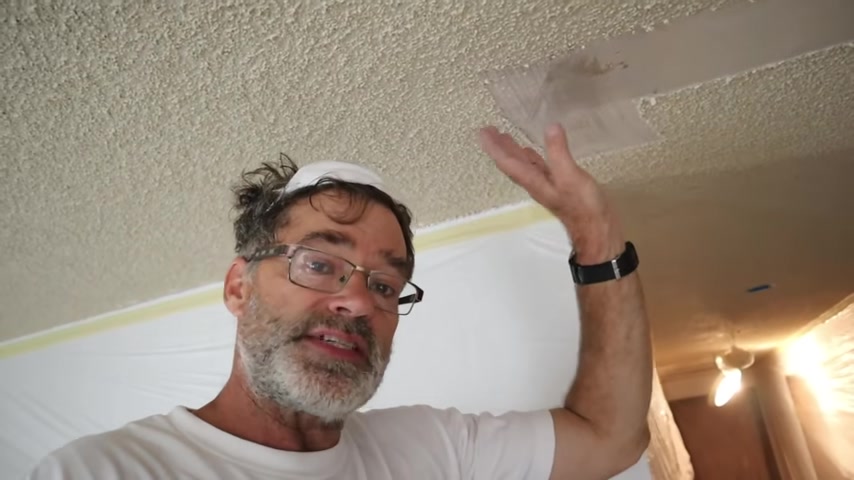
The beauty of that , it has enough moisture to get this texture off , but it doesn't have too much moisture to impregnate the dry wall itself .
Back in the seventies and early eighties , nothing but five eights thickness sheet rock was put on the ceilings because it was a fire code .
It was much thicker and it wouldn't sag between 24 and centers .
Since then , they've come out with a ceiling board which is only half inch , but it has a , a lot of fiberglass fibers in it .
So it's an isa also either way you're really not going to affect the integrity of this dry wall behind that texture .
With the moisture .
You can see it gets moist .
But as long as the paper doesn't peel off , then you're good to go .
The beauty of it is this just peels off and there's no dust whatsoever .
If you're worried about a little bit of dust , go ahead and get yourself a mask or eye protection .
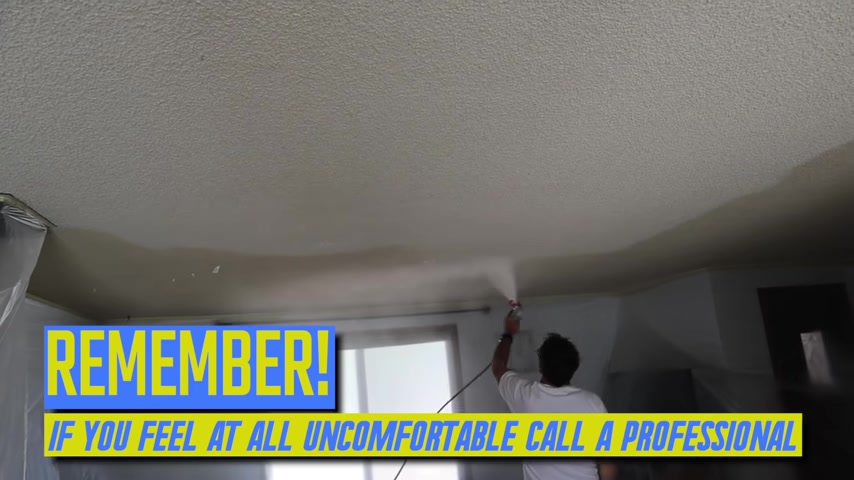
I might also add , if you feel that there's any possibility of asbestos in this stuff , go ahead and have somebody test it for you and if you're not comfortable in scraping it off in any form , wet or dry , certainly not dry because they will create that dust .
And those look like asbestos fibers will get in your lungs .
If you don't have the proper protection , then if you don't want to do it , go ahead and hire a professional group of people who are usually very adept at asbestos abatement .
They don't come in granted it's gonna be expensive , but it's a peace of mind , especially if you have Children in the home and you don't want any exposure whatsoever .
So , at this point , we're just gonna go through out this house , it's good to get a wide knife and just start peeling this stuff off .
Now , if you get to a point where it seems to be a little more difficult , like it seems drier .
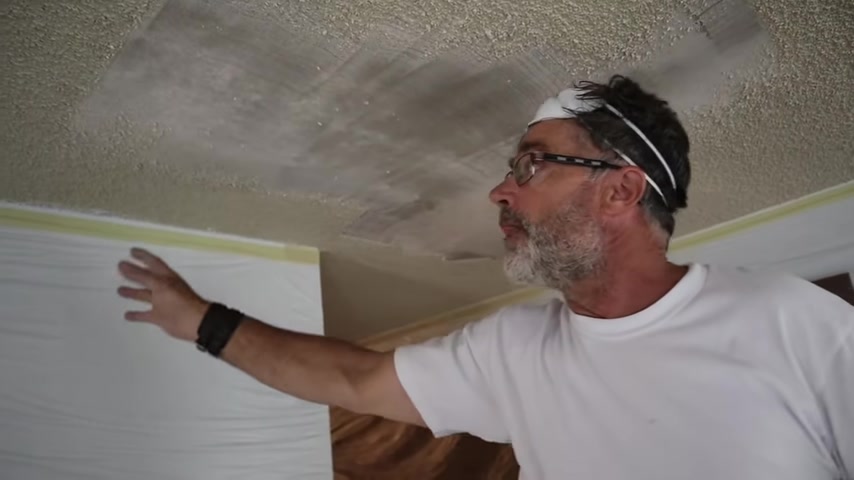
One or two things , you can grab your airless , add a little more moisture to it at this point , it's not gonna take much or you're on a seam that's been taped and mud , the paper dry will will come off a lot easier .
Once you get to a seam like here , a corner angle where that mud was , it'll be a little drier .
It may take a little bit more moisture to peel off .
For instance , there is a butt joint right here .
At this point , it has enough moisture to peel right off .
So you may not encounter that if you do just realize sometimes this is drier .
Now , you can see the butt joint here where two pieces have come together and there's the tape .
You don't want to scrape so hard that you start to gouge into that tape because then you'll have to retape that scene .
So you can see we drop the lights down so we can get all the acoustic off .
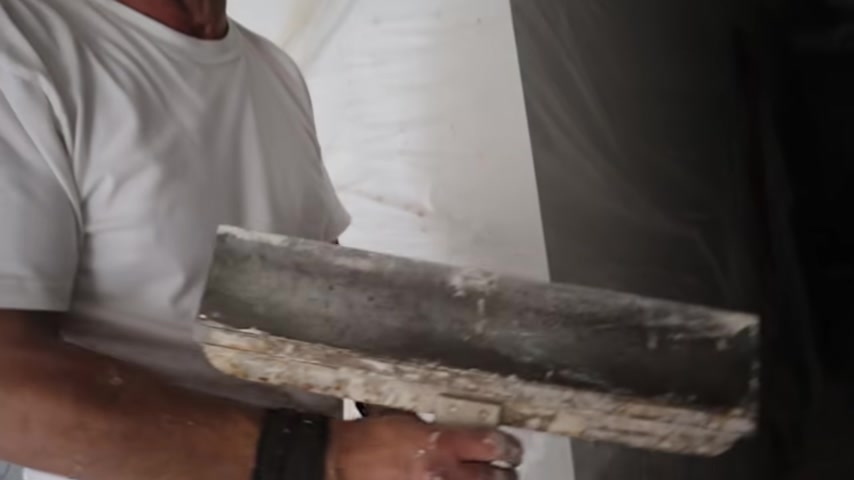
At that point , you're gonna have wires hanging down .
Remember you're gonna be putting a lot of moisture on that ceiling .
So go ahead and shut the power off to those .
Another thing .
Once you start scraping , you gotta be scraping like this .
Be careful .
Your blade is very sharp , doesn't hit the installation on those wires that are hanging down from not only the smoke alarm but the light , the ceiling light .
So all in all it is a very simple job .
If you have just a few right tools , anybody can do it , homeowner professional , whatever .
Just remember the best way to do it is with moisture , get it wet enough .
So there's no dust and there's really no effort in taking it off .
That's the way it should come off .
Very simple .
Make sure you do good masking .
If you have any moisture sensitive things in the room outside of the masking , go ahead and remove those because it gets very humid .
In fact , it may bring some plants in to get them going with that humidity .
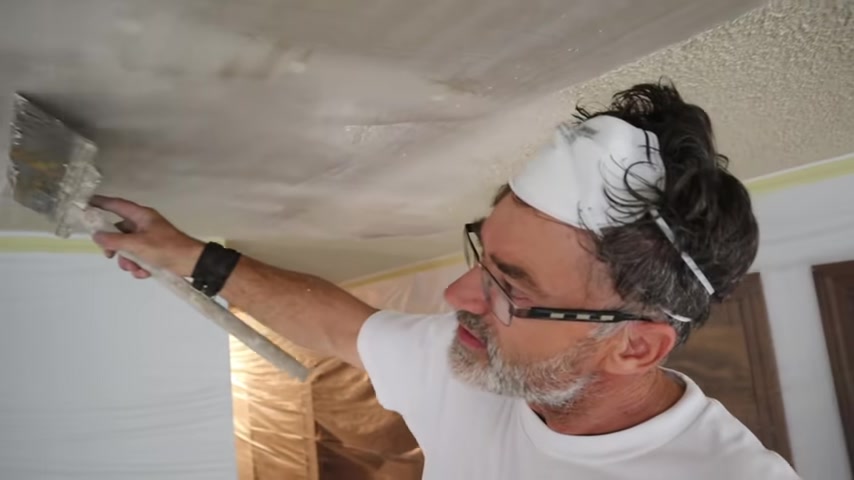
So have fun .
Have any questions .
Shoot me a message , help answer those for you .
Otherwise I gotta start scraping and , you know , all in all it's almost kind of enjoyable to get this old stuff off that this has been on there for 40 years because this house was built in 1979 which was the same year , was married .
So , the funny thing is I sprayed it on and now I scraping it off .
So , talk about job security .
Yeah , maybe I was thinking ahead .
So , until next time , do I duke will stay with you ?
Stay healthy , stay buff and I'll see you next time .
Are you looking for a way to reach a wider audience and get more views on your videos?
Our innovative video to text transcribing service can help you do just that.
We provide accurate transcriptions of your videos along with visual content that will help you attract new viewers and keep them engaged. Plus, our data analytics and ad campaign tools can help you monetize your content and maximize your revenue.
Let's partner up and take your video content to the next level!
Contact us today to learn more.